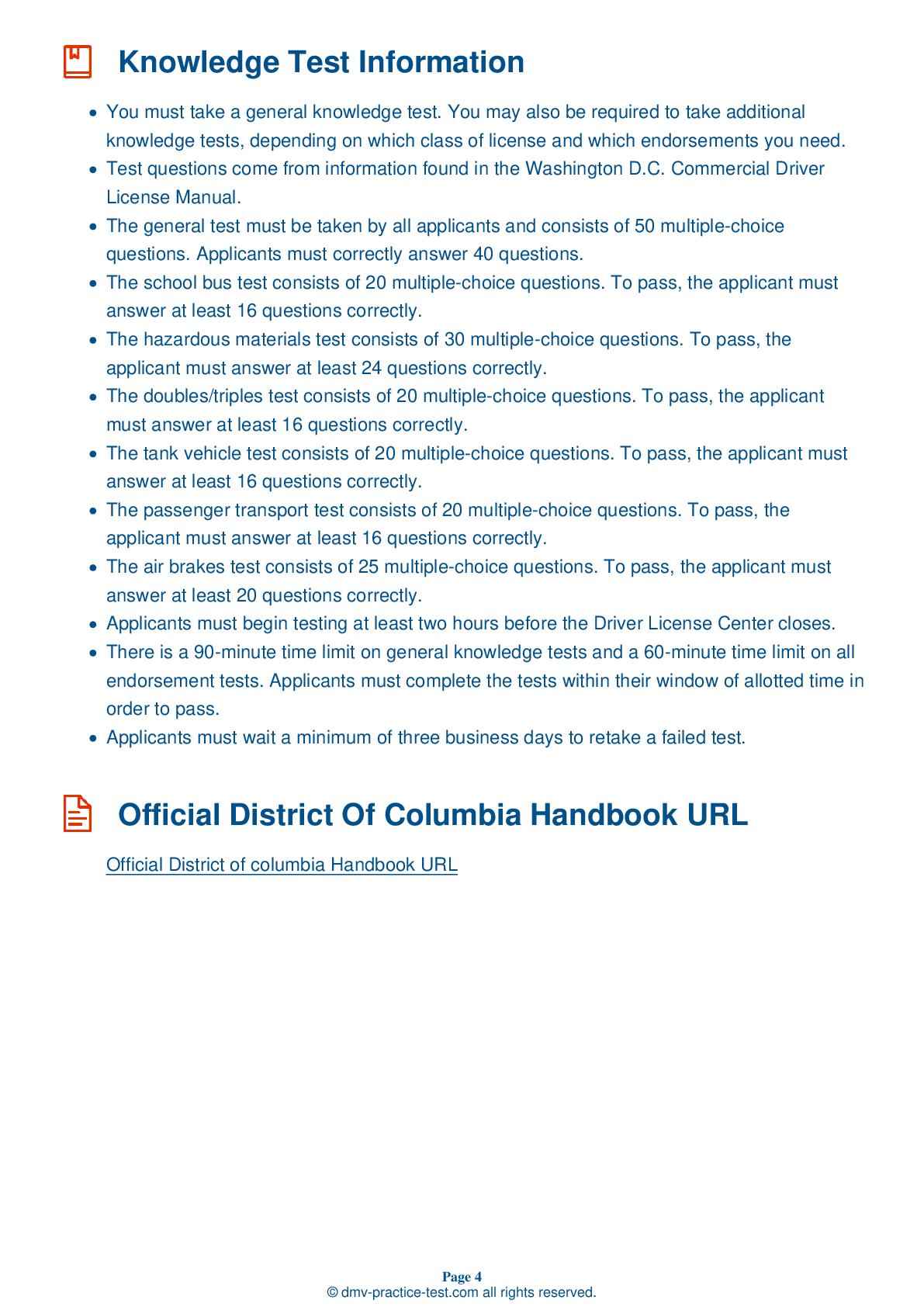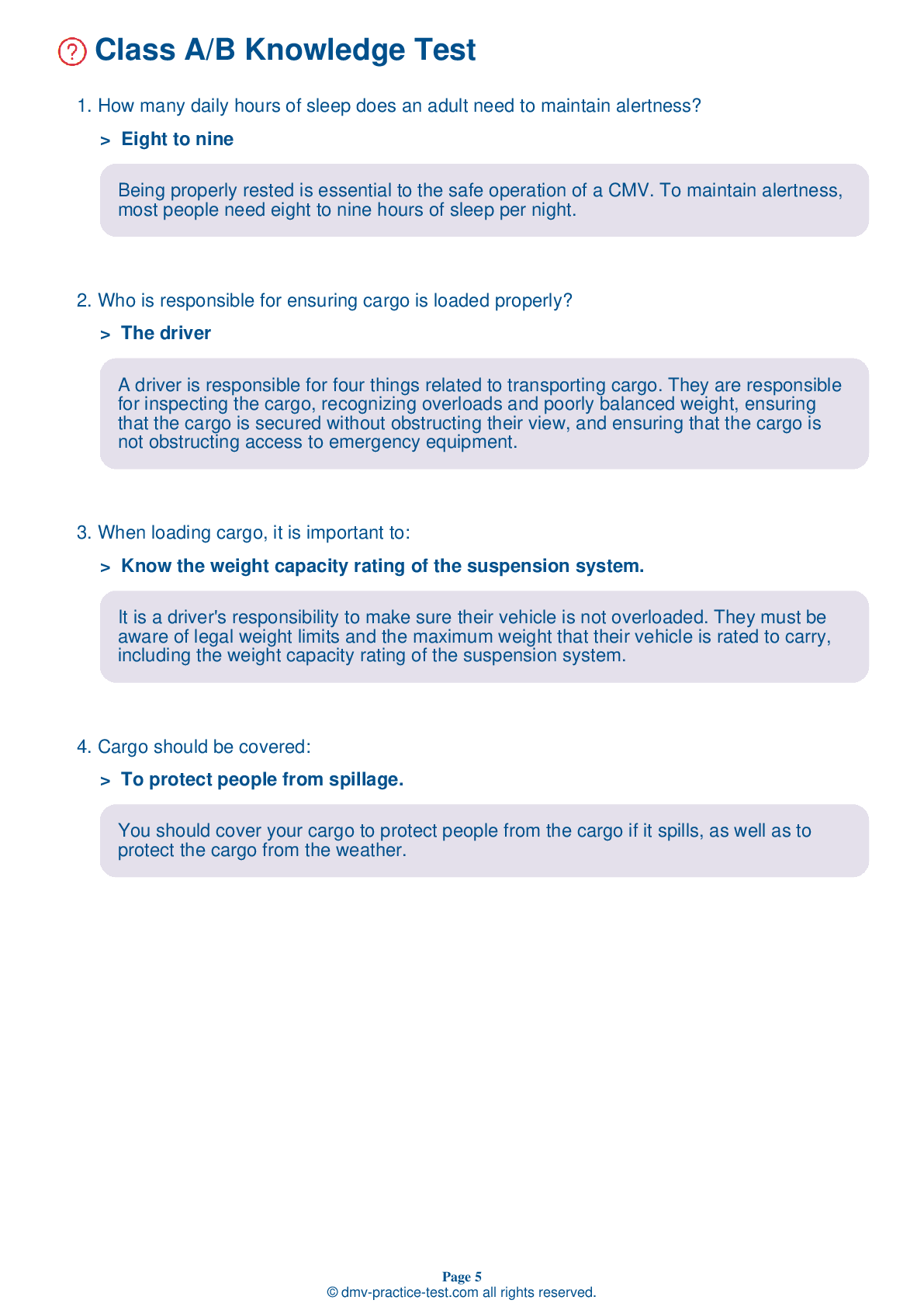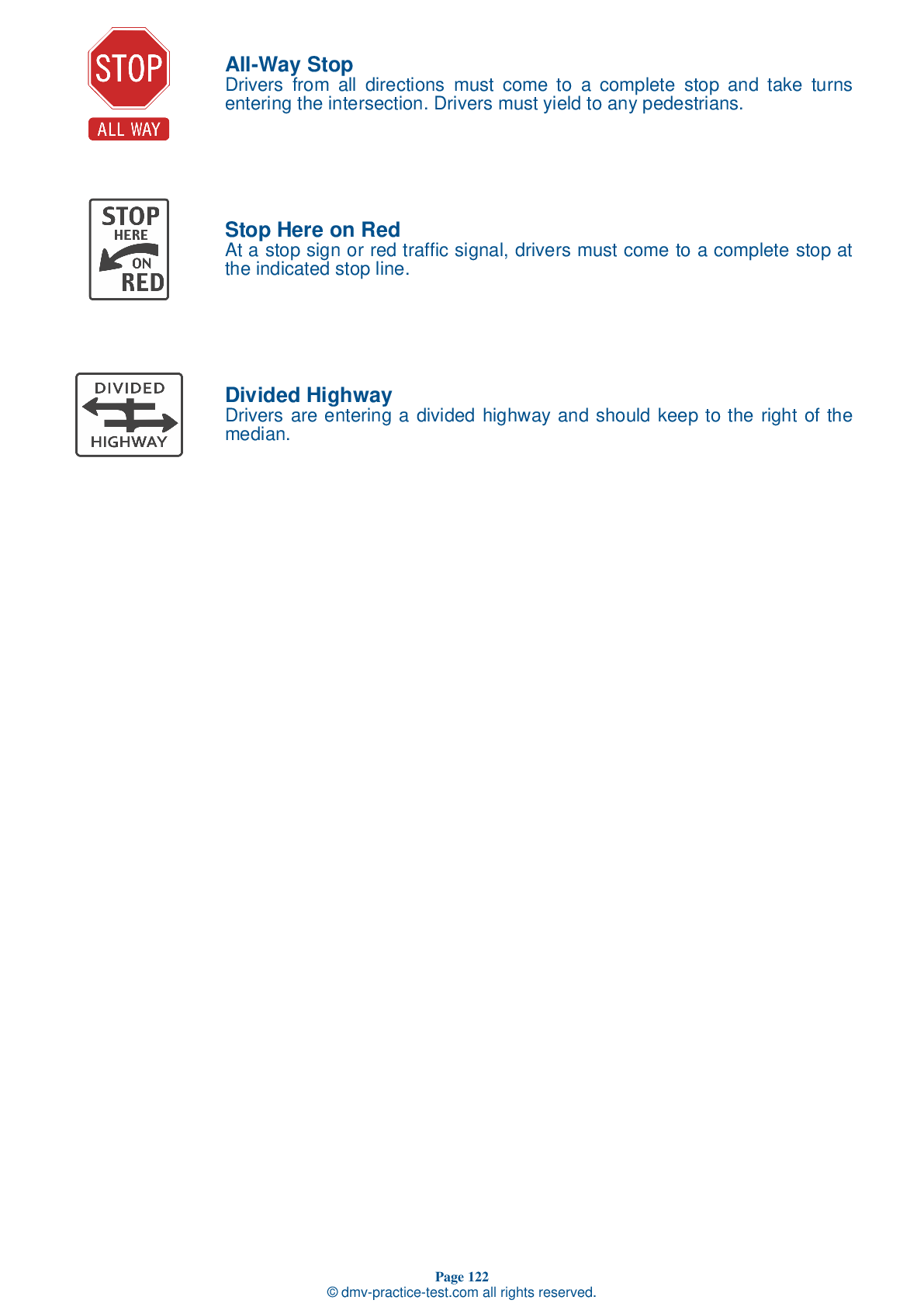Knowledge Test Class B #2
Class B Driving Test | District Of Columbia 2025 #2 Page 3 of 7
Train for FREE online with our District Of Columbia class B license test. The official exam test consists of several obligatory parts, with all of them checking your knowledge of different blocks of road rules. If you need to obtain a DC CDL class B permit in 2025, practice as much as possible. Free sample tests published on our website will help you check and improve your knowledge and boost your grades. Please bear in mind that CDL class B requirements may vary from state to state.
50
40
20
15 . When an engine is started:
The hood must be open.
After a vehicle is started, the warning lights and buzzers should go out after a few seconds. If the warning signals do not turn off, there may be something wrong with the vehicle.
16 . Air tank drains:
Must remain open during transit.
In an air brake system, the air storage tanks must be drained to remove accumulated water and compressor oil. Failing to do so can cause damage. Manually operated drains should be used at the end of each day of driving.
17 . Federal and state laws require:
Drivers to inspect their vehicles, but only if they will be transporting hazardous materials.
Commercial drivers are required by federal and state laws to inspect their vehicles before every trip. Regular inspections can help drivers identify issues before they become dangerous and costly.
18 . Regarding winter driving, all of the following are true, except:
Use a gauge to verify that each tire has a safe tread depth.
When driving during the winter, it is particularly important that your tires have adequate tread. You need a tread depth of at least 4/32 of an inch in every major groove on the front tires, and at least 2/32 of an inch on the back tires. Check the tread depths by using a gauge.
19 . During an applied leakage test, the maximum leakage rate for a double combination vehicle is:
4 psi in a minute.
It is important to know the maximum air loss rate that is safe for your specific vehicle. A double combination vehicle should have a leakage rate no higher than 4 psi in a minute during an applied leakage test.
20 . What is black ice?
Ice that is easily seen
Black ice is a thin layer of ice that is clear enough for the road surface to be seen through it. A road covered in black ice may look like it is merely wet.
21 . When a tire goes flat, you may hear a loud bang. The truck will be affected:
Only if the truck is hauling a load.
There may be a delay of a few seconds between the sound of a tire failing and the time that the vehicle is affected by the tire failure. Because of the short delay, a driver may initially believe that the sound came from another vehicle.
2025 District Of Columbia | Frequently Asked Questions
To acquire a CDL Hazmat endorsement in the District of Columbia, you must first hold a valid CDL. Then, pass the Hazardous Materials Knowledge Test at a DMV service location. You'll also need to undergo a federal TSA background check and fingerprinting. Lastly, submit the Hazmat Endorsement Application, proof of U.S. citizenship or legal status, and pay the required fees.
To obtain a CDL Hazmat license, you must already hold a valid Commercial Driver's License (CDL). You also need to pass the Hazardous Materials Knowledge Test, undergo a federal TSA background check, and be fingerprinted. Proof of U.S. citizenship or legal status is required. Lastly, you need to be in good physical health to meet the demands of the job.
When applying for a CDL Hazmat endorsement, you'll need to provide your valid Commercial Driver's License (CDL), proof of U.S. citizenship or legal residency (like a passport or birth certificate), and proof of identity. You'll also need to bring the receipt for your TSA background check and fingerprinting, and complete the Hazmat Endowment Application.
Yes, there is a dedicated written test for the CDL Hazmat endorsement. This test focuses on the rules and safety procedures for handling and transporting hazardous materials. It's essential to study the Hazmat section of your state's CDL manual thoroughly before taking the test to ensure you're well-prepared.
The written test for the CDL Hazmat endorsement covers a range of topics related to hazardous materials. These include identifying hazardous materials, understanding shipping papers, using placards and labels, handling emergencies, loading and unloading procedures, and complying with the relevant safety rules and regulations.
Yes, there are extra charges associated with acquiring a CDL Hazmat endorsement. These include fees for the TSA background check and fingerprinting, which typically cost around $86.50. Additionally, there may be a fee for the endorsement application, which varies by state. It's best to check with your local DMV for specific costs.
Yes, obtaining a CDL Hazmat endorsement requires a mandatory background check and fingerprinting conducted by the Transportation Security Administration (TSA). This ensures the individual doesn't pose a security threat and is part of the federal safety regulations for handling hazardous materials.
Yes, specialized training is mandatory for the CDL Hazmat endorsement. Applicants must pass a written test that covers the regulations and requirements for transporting hazardous materials. After passing the test, they receive a certification, which is the Hazmat endorsement on their Commercial Driver's License (CDL). This ensures they are knowledgeable about handling hazardous materials safely.
No, you cannot legally transport hazardous materials without a valid CDL Hazmat endorsement. This endorsement ensures that you have the necessary knowledge and skills to handle hazardous materials safely. Driving without it can result in serious penalties, including fines and suspension of your commercial driver's license.
Yes, you can add a Hazmat endorsement to your existing CDL. You don't need to apply for a new CDL. However, you must pass a written Hazmat knowledge test, submit to a TSA background check, and pay the associated fees. Once these steps are completed successfully, the Hazmat endorsement will be added to your CDL.



